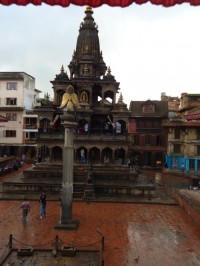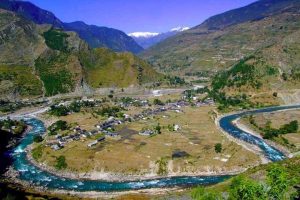Thimi, land of the potters
Tucked between two major localities in Bhaktapur, Thimi is usually overlooked by the tourists as the guidebooks often seem to forget mentioning them. This small town laying few kilometers away from the urbanization of the Kathmandu city is still untouched by the globalization and westernization and boast of tradition and heritage. Although overlooked most of the time, a trip to Thimi might be more rewarding than one thinks.
This easy to access small town by a taxi, public transport, motorbike or bicycle is located just off the Kathmandu-Bhaktapur highway and is divided by a main road into New Thimi and Old Thimi. Among these two, the Old Thimi is rich with architecture, temples and handicraft business. Well known for their long traditional business of pottery making, this land of potters displays the multitude of drying ceramics outside most of the homes in town, as you stroll through. The rows of large and small terra cotta water pots, containers for cooking and making Nepali alcohol (both rakshi and chyang) and tiles for roofs and floors adorn the nooks and crannies of the town (usually kept for sale) which shows that most of the people living in this town is involved in this craft one way or the other.
Most of the residents here have the surname Prajapati which in Newari means ‘potter’. The name Prajapati comes from the Sanskrit language in which it means ‘producer’. There was a time in history when Thimi was a small kingdom just like Kathmandu and Patan and around four hundred ago a big earthquake destroyed all the buildings. After that, the King of Thimi moved to Bhaktapur and if we follow the story, then we come to realize that Thimi is older than Bhaktapur.
The people in Thimi boast of the fine and perfect hand-made pots and why not? The products made here are quality products that are able to meet highest of standards. These products definitely beat the mass production of poor quality generated (made) by the machines as the people hand-make their products, skillfully giving shape to the otherwise dust of mud. Unlike the trip to Bhaktapur or Patan where you can observe the Newar and Malla-era architecture, the trip to Thimi lets you explore the ceramics industry that dominates the town, however, the trip is gratifying in its own way.







